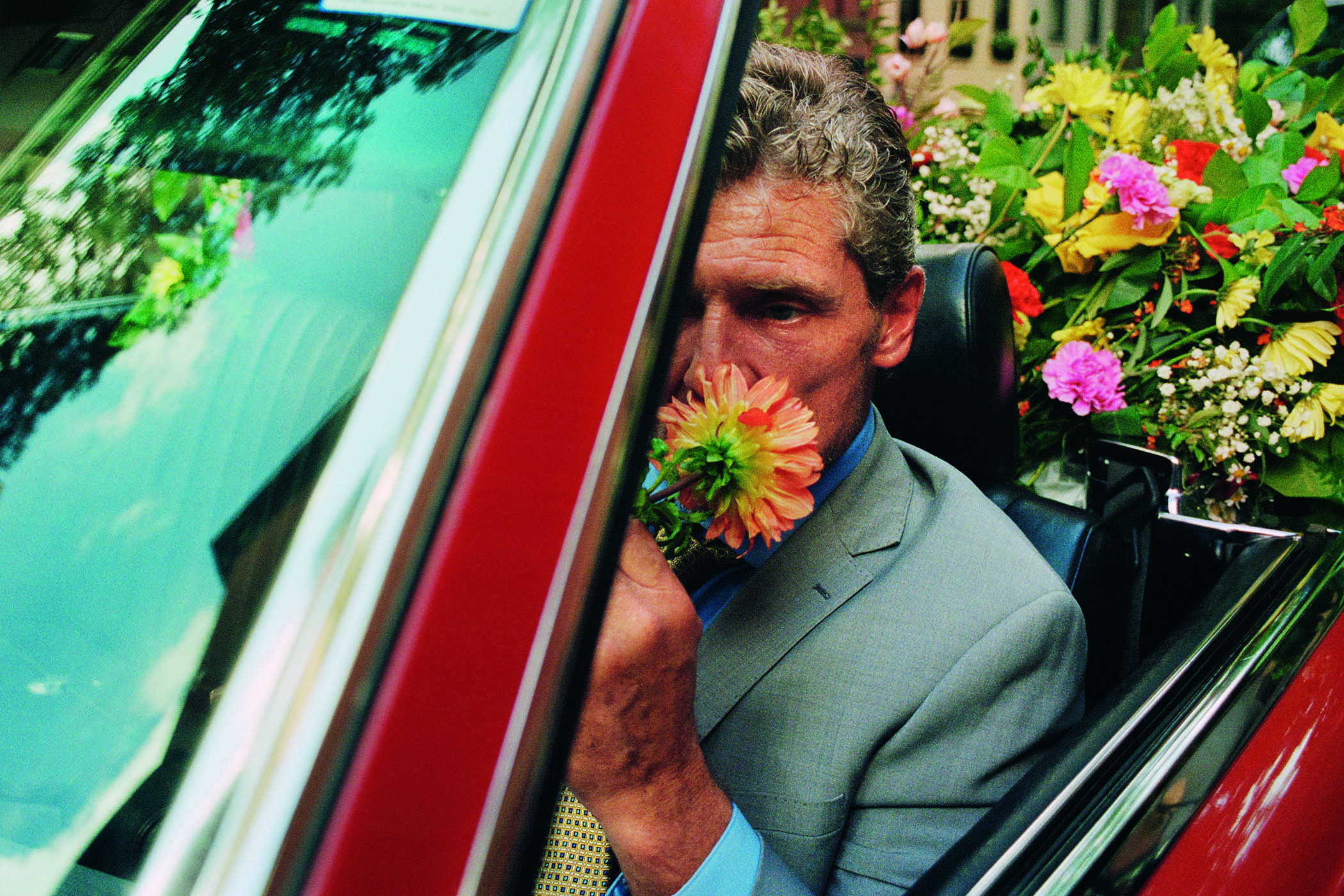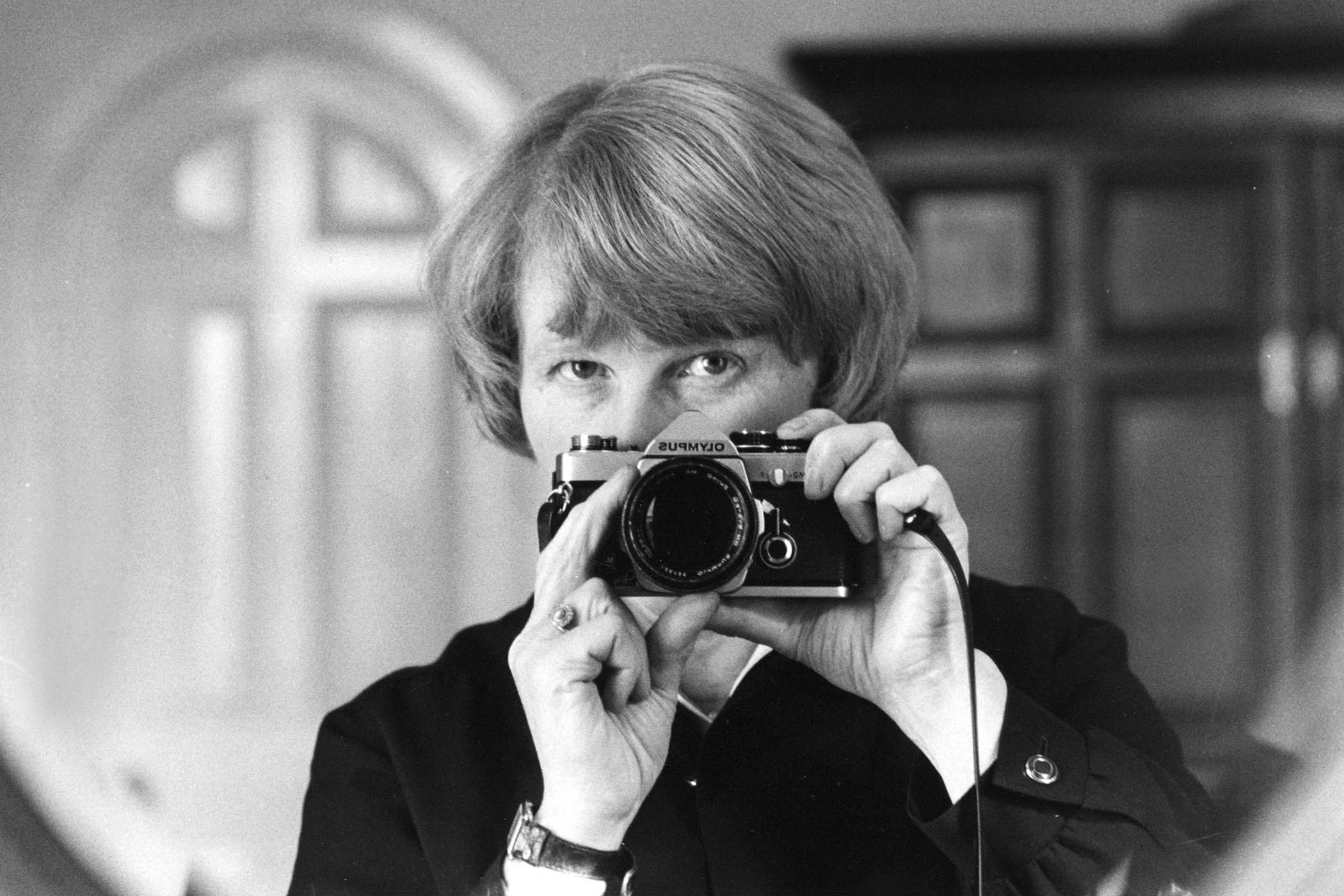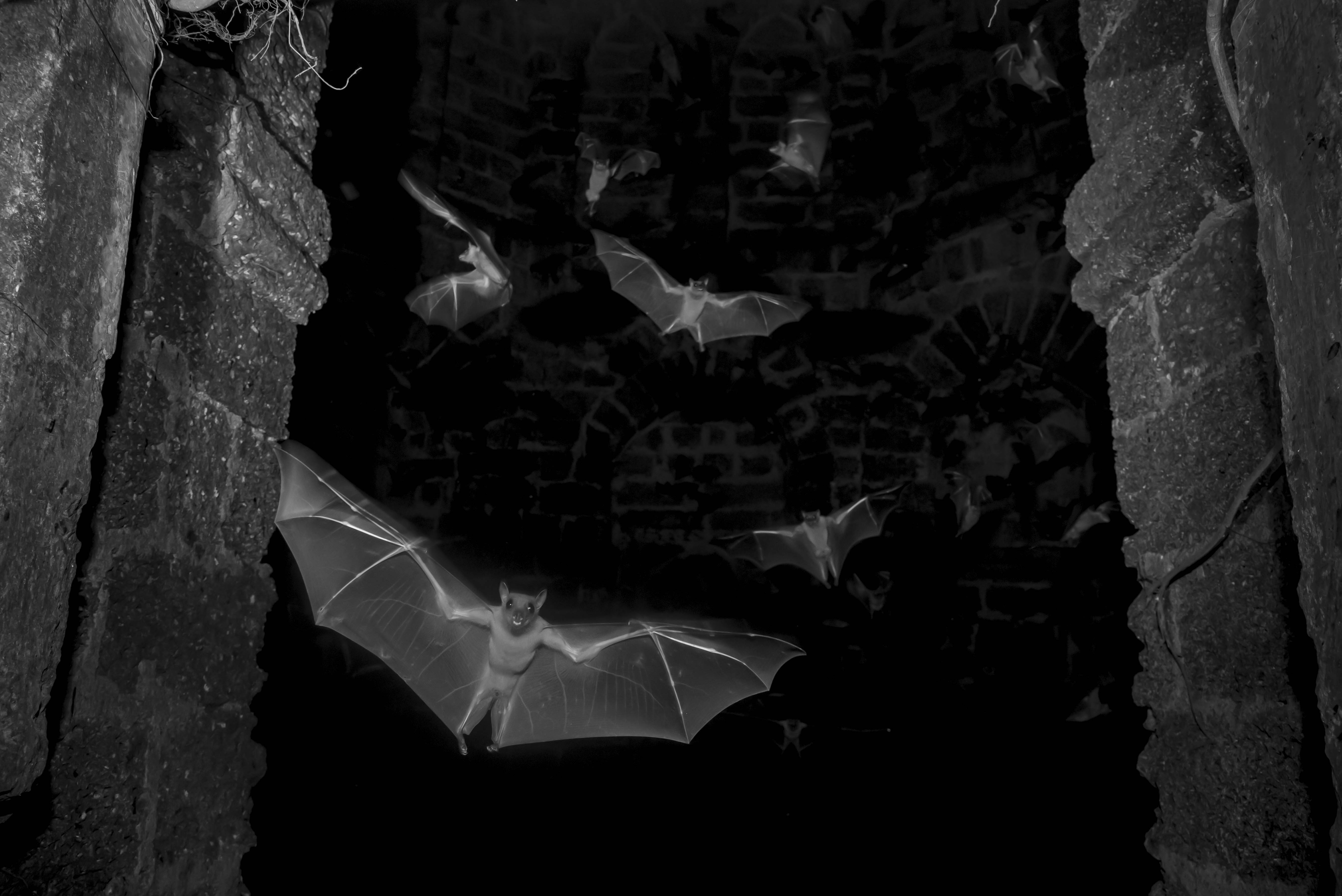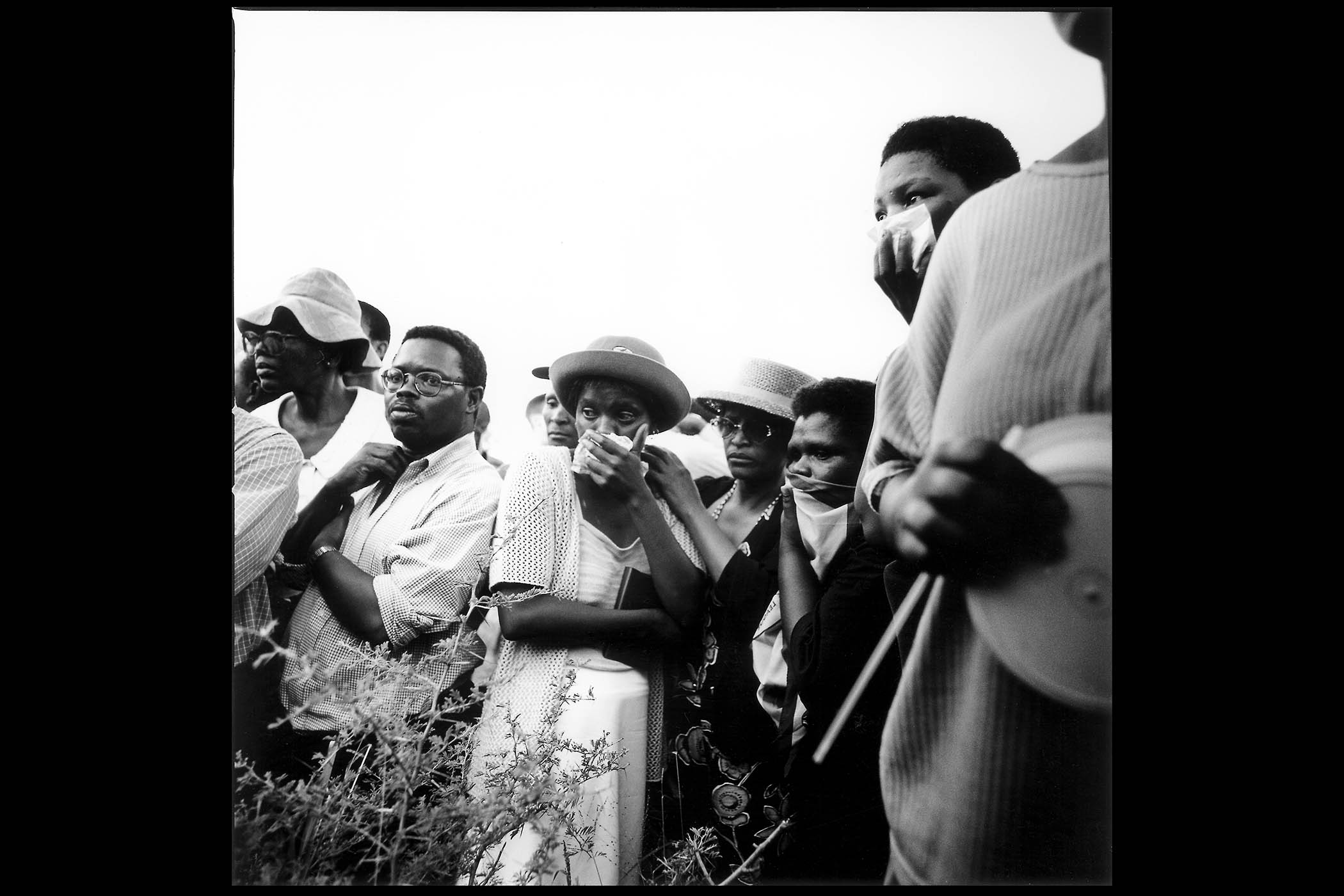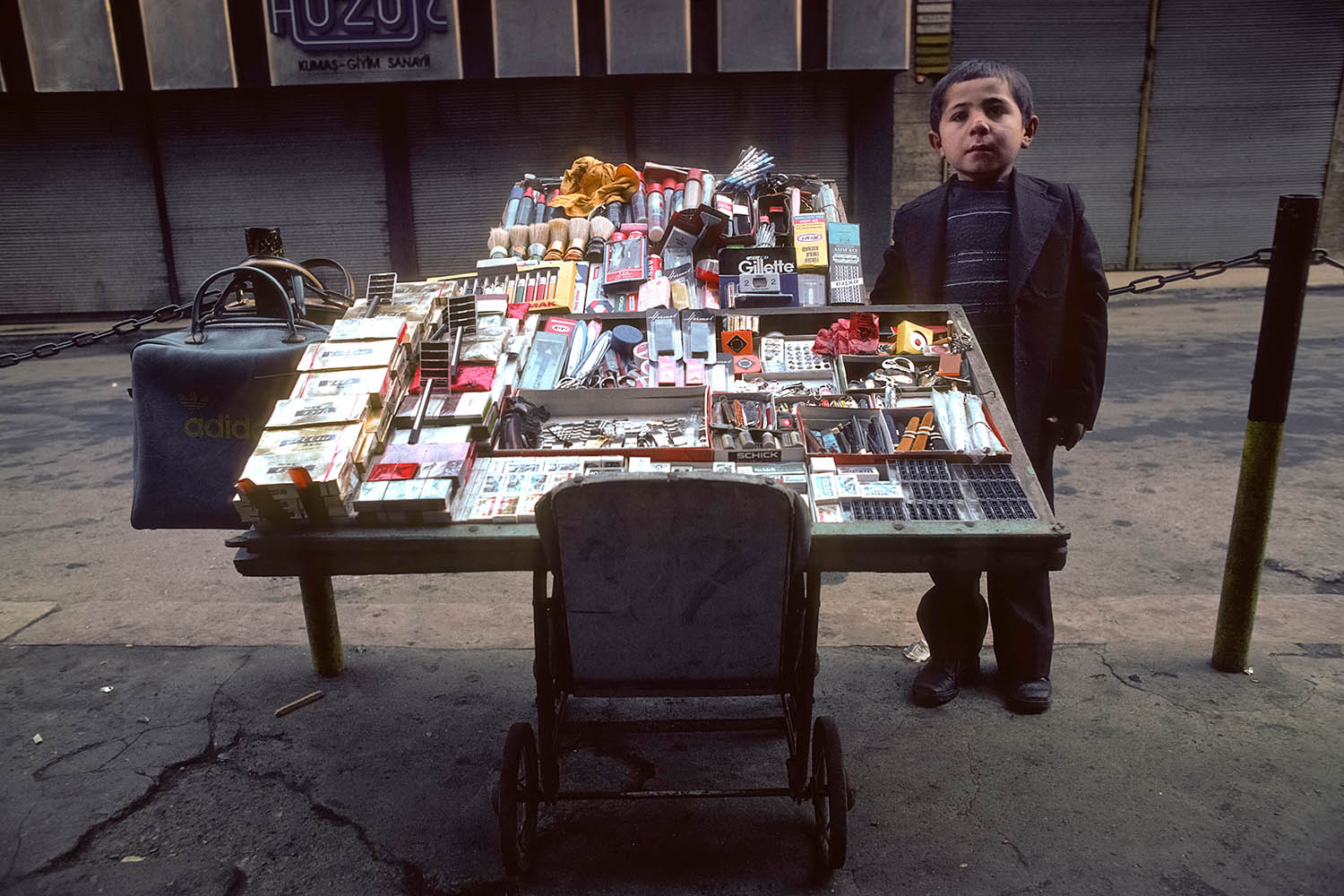
Setting out his stall for French photographer Jean-Pierre Laffont: the face of child labour in 1970s Istanbul
It’s heartbreaking but there’s also something faintly comical about this image by Jean-Pierre Laffont. The boy, presiding over his stall, has the posture, attire and careworn expression of a man 50 years his senior. We half imagine he’s been stationed there as a joke, and that the real stall owner will take his place, shooing the boy off to school. But this is the boy’s day job: selling shaving brushes, watch straps and lighters on the streets of Istanbul.
Between 1979 and 1980, French photojournalist Laffont, a founding member of the Gamma USA and Sygma photo agencies, travelled to countries including India, Bolivia and Egypt to document the exploitation of children around the world. At the time, an estimated 56 million children under 15 were being put to work, even though nearly all countries had minimum age laws to prevent it. In Laffont’s series, which won the World Press Photo award in 1980, we see kids – some of them little older than toddlers – hauling concrete slabs on construction sites, scouring rubbish heaps and toiling in sweatshops.
We might hope that things have changed but as Laffont, who is now 90 and living in New York, recently pointed out, “the story is still accurate and relevant today”. The current estimate of children working worldwide is close to 138 million. And almost 50 years on from Laffont’s trip, it’s hard not to wonder what became of the children he photographed. Did some break out of the cycle of poverty? Are many in the same jobs? Has the boy behind the stall in Istanbul become the careworn man we see foretold in Laffont’s photograph?
A retrospective of Jean-Pierre Laffont’s work will be showing at Visa Pour l’Image in Perpignan, France, from 30 August to 14 September
